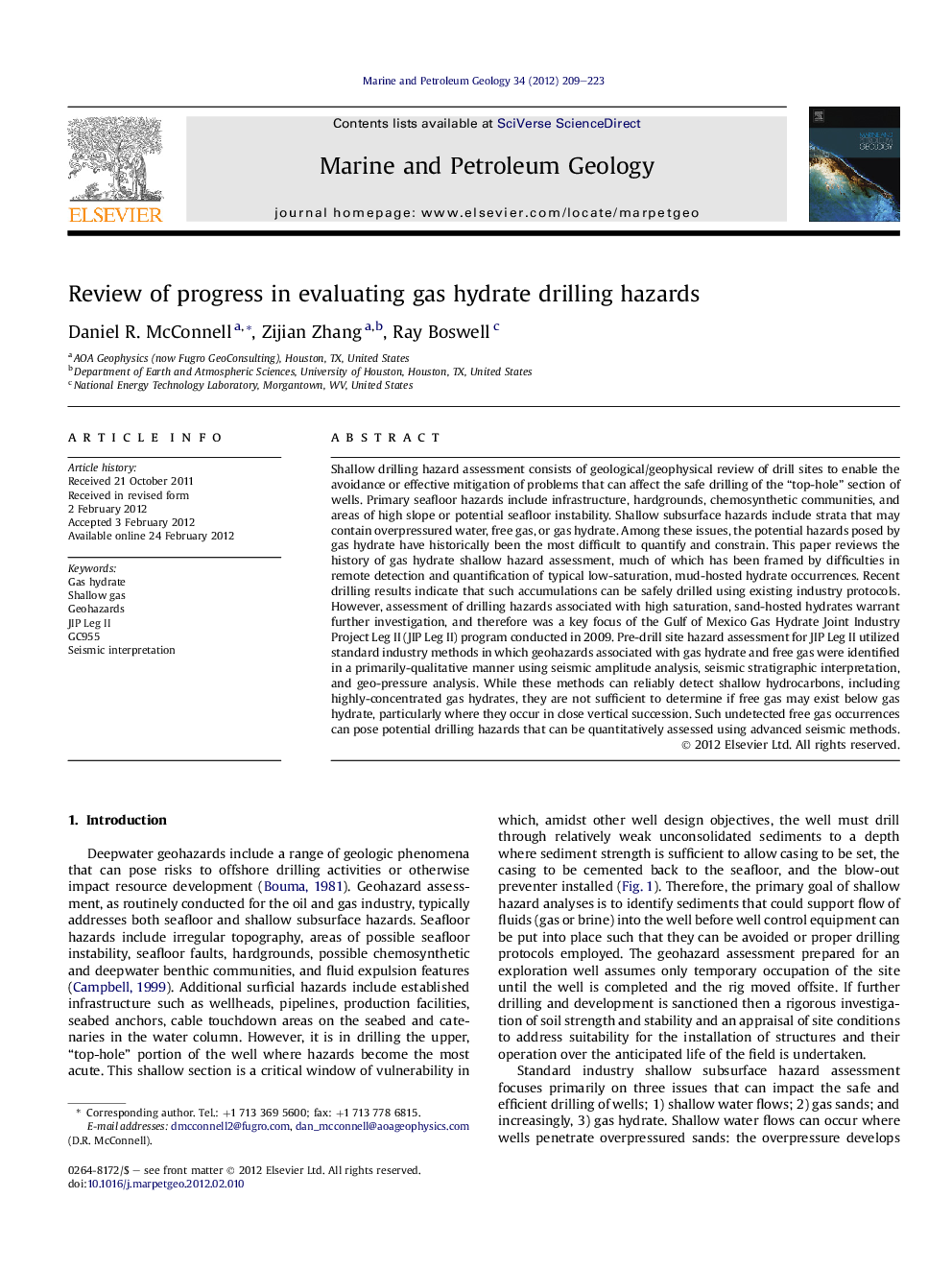| کد مقاله | کد نشریه | سال انتشار | مقاله انگلیسی | نسخه تمام متن |
|---|---|---|---|---|
| 4695975 | 1351647 | 2012 | 15 صفحه PDF | دانلود رایگان |

Shallow drilling hazard assessment consists of geological/geophysical review of drill sites to enable the avoidance or effective mitigation of problems that can affect the safe drilling of the “top-hole” section of wells. Primary seafloor hazards include infrastructure, hardgrounds, chemosynthetic communities, and areas of high slope or potential seafloor instability. Shallow subsurface hazards include strata that may contain overpressured water, free gas, or gas hydrate. Among these issues, the potential hazards posed by gas hydrate have historically been the most difficult to quantify and constrain. This paper reviews the history of gas hydrate shallow hazard assessment, much of which has been framed by difficulties in remote detection and quantification of typical low-saturation, mud-hosted hydrate occurrences. Recent drilling results indicate that such accumulations can be safely drilled using existing industry protocols. However, assessment of drilling hazards associated with high saturation, sand-hosted hydrates warrant further investigation, and therefore was a key focus of the Gulf of Mexico Gas Hydrate Joint Industry Project Leg II (JIP Leg II) program conducted in 2009. Pre-drill site hazard assessment for JIP Leg II utilized standard industry methods in which geohazards associated with gas hydrate and free gas were identified in a primarily-qualitative manner using seismic amplitude analysis, seismic stratigraphic interpretation, and geo-pressure analysis. While these methods can reliably detect shallow hydrocarbons, including highly-concentrated gas hydrates, they are not sufficient to determine if free gas may exist below gas hydrate, particularly where they occur in close vertical succession. Such undetected free gas occurrences can pose potential drilling hazards that can be quantitatively assessed using advanced seismic methods.
► Buried gas hydrate deposits in GoM identified by industry confirmed by drilling.
► Free gas beneath gas hydrate is difficult to assess with existing methods.
► New tools (Zhang et al., in press (this volume)) are proposed to assess free gas beneath gas hydrates.
Journal: Marine and Petroleum Geology - Volume 34, Issue 1, June 2012, Pages 209–223